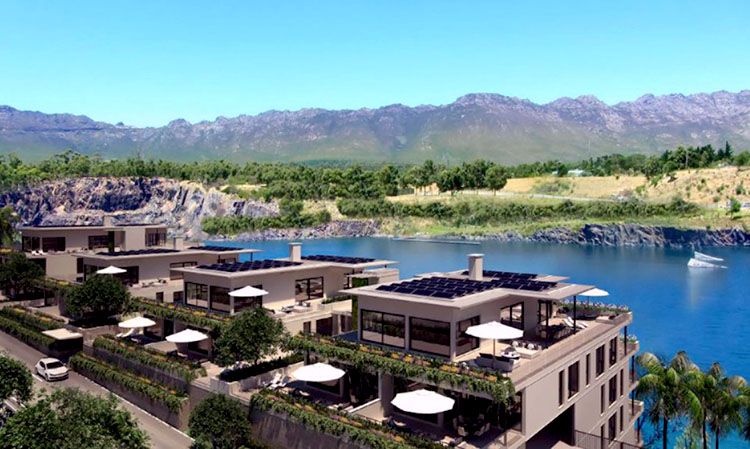

One village in South Africa is taking green living to a whole new level.
Blue Rock Village, situated just 45 minutes outside of Cape Town, sits on Blue Rock Lake, an old rock quarry that provided construction materials to Cape Town in the late 1990s.

The village was inspired, according to architecture firm Swisatec, “by our vision to create a safe, environmentally friendly, car-free village for all ages.”
Blue Rock will be a self-functioning 1,000-apartment town, equipped with a lifestyle center, shopping, food, entertainment venues, schools and doctor offices, according to the village’s website. Instead of being built from scratch, the village will be built by upgrading an already-existing resort. The project is expected to cost USD$900 million. And with that budget, Swisatec is pulling out all the stops.

The eco-village will be car-free, but there will be underground parking for residents to store their cars for when they need to travel. The design of the village allows for maximum vegetation along the cobblestone streets and in public spaces, the village’s website says. Streets are designed with several seating areas so residents can interact with nature and each other.
Blue Rock Village said all building materials to construct the village will be environmentally friendly.

Residents can choose from one-, two- or three-bedroom apartments as well as penthouses. All apartments will have large balconies, an intercom security system and 2.4 meter (roughly 8-feet) glass windows. Other features include:
- Non-toxic materials and paints
- Sound-proof main entrance doors
- Sealed thermal break aluminum double glazed windows
- Year-round underfloor pipe heating system
- Insulated and sound-proof floors and walls
- LED lighting
- 9-foot ceilings to help with temperature control
- Solar power
- Water management system from shower to irrigation

“Each and every aspect has been considered, from room and window heights, to sound and even temperature regulation, to maximize your well-being and quality of life,” states the village’s website.
Construction on Blue Rock Village is set to begin September 2016.
YOU MIGHT ALSO LIKE
World’s Largest Solar Rooftop System Goes Online, Will Power 8,000 Homes
Nation’s First Major Public University Fully Divests From Fossil Fuels
Exxon Board Rejects All Nine Climate Resolutions at Annual Meeting

 233k
233k  41k
41k  Subscribe
Subscribe 